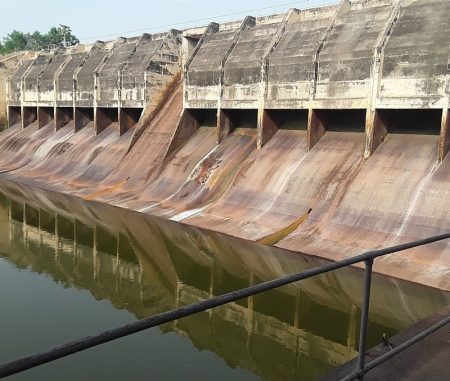The Dambai-Asukawkaw highway in the Oti Region of Ghana has become a hotbed of highway robbery, posing a significant threat to the safety and security of commuters. The most recent incident occurred in the early hours of Monday, June 9th, 2025, when armed robbers opened fire on a Sprinter bus carrying eight passengers, including Madam Richlove Agyemang, a trader from Hohoe in the Volta Region. Madam Agyemang was struck by a rubber bullet fired through the side door of the vehicle, highlighting the indiscriminate nature of these attacks and the vulnerability of innocent travelers. This latest incident underscores the urgent need for increased security measures along this vital transportation artery.
The attack, which took place around 1:00 am at Anyabor No. 2, a farming community near Dambai, is not an isolated occurrence. This stretch of road has gained notoriety for similar incidents in the past, creating a climate of fear and insecurity among those who rely on it for their livelihood and daily commute. The frequency of these attacks points to a pattern of criminal activity that demands immediate and decisive action from law enforcement agencies to protect the lives and property of citizens. The incident involving Madam Agyemang further emphasizes the vulnerability of traders who frequently use this route to access markets and conduct their business. The economic implications of such insecurity cannot be overlooked, as it disrupts trade and hampers economic activities in the region.
The January 2025 attack on Abukari Seidu, a 51-year-old driver who was shot by highway robbers on the same Dambai-Asukawkaw road, serves as a stark reminder of the potential for lethal violence in these attacks. Seidu’s injuries, which included bullet wounds to his arm and ribs, necessitated his transfer to Accra for specialized medical attention. The severity of his injuries underscores the life-threatening nature of these attacks and the urgent need for effective strategies to combat highway robbery in the region. The recurring nature of these incidents demands a comprehensive approach involving increased police presence, improved intelligence gathering, and community engagement to identify and apprehend the perpetrators.
The Krachi East Divisional Police Command has confirmed receiving a report about the June 9th incident involving the rubber bullet and has initiated investigations to apprehend those responsible. ASP Al-hassan Abdul-Razak, the Divisional Crime Officer, assured the public that the police are diligently working to bring the culprits to justice. However, the lack of arrests thus far raises concerns about the effectiveness of current security measures and the ability of law enforcement to respond swiftly and decisively to these criminal activities. The public’s trust in the ability of the police to maintain law and order requires demonstrable results, including the arrest and prosecution of those responsible for these crimes.
The repeated attacks on the Dambai-Asukawkaw highway necessitate a multi-faceted approach to address the underlying causes and prevent future incidents. This includes enhancing police visibility along the route, implementing regular patrols, and establishing checkpoints to deter potential attackers. In addition to these reactive measures, proactive strategies such as community policing initiatives, improved intelligence gathering, and collaboration with local communities to identify and report suspicious activities are crucial. These proactive measures can help build trust between the police and the community, leading to more effective crime prevention and apprehension of criminals.
Furthermore, addressing the socio-economic factors that contribute to criminal activity is essential for long-term solutions. Providing alternative livelihood opportunities for young people at risk of engaging in criminal activities, improving access to education, and addressing issues of poverty and unemployment can significantly reduce the incentive for individuals to resort to crime. In addition, improving the infrastructure along the highway, including adequate lighting and clear road markings, can enhance safety and deter criminal activity. A comprehensive and sustained effort involving law enforcement, community leaders, and government agencies is necessary to ensure the safety and security of those who travel along the Dambai-Asukawkaw highway. Only through collaborative action can we hope to eliminate the threat of highway robbery and create a secure environment for all.














